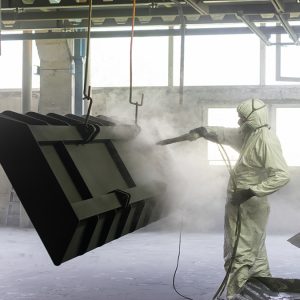What is the purpose of sandblasting?
Have you ever seen someone wearing a respirator, pointing a nozzle at a surface? It’s most likely a person sandblasting, which is also known as “abrasive blasting.” Sandblasting, though it can be hard work, is a common method for construction companies to use.

What is sandblasting?
Sandblasting is a “cleaning” method to remove paint, rust, and residue oxidized on different materials. It can completely change the condition of a metal’s surface, such as removing scratches.
Sandblasting consists of forcibly propelling a stream of abrasive material against a surface, using high-pressure air or water to smooth, roughen, shape, or even remove surface contaminants. Sandblasting has a few great benefits, but it can also be harmful to whoever is doing the job.
Benefits of sandblasting
Though sandblasting can be a tough job, it does have its advantages over other methods.
- Cleans the surface – Sandblasting doesn’t just smooth a surface; it cleans it by ridding harmful contaminants, such as rust or oil.
- Quick – It cleans and smooths surfaces very quickly and efficiently, which saves both time and money.
- Removes old paint, rust, and more – Paint and other old materials left on a surface for a while can be difficult to remove using other methods. Sandblasting can quickly remove the contaminants, leaving the surface looking fresh and new.
Dangers of sandblasting
Abrasive blasting can create high amounts of dust and toxic materials. The decision to use a particular type of abrasive material depends on cost, environment, worker health, and other factors. Commonly used materials include:
- Silica sand
- Glass
- Steel grit
- Garnet sand
- Nickel slag
- And more
Sandblasting is a great way to alter a surface and has excellent benefits, but you must be aware of the dangers. Abrasive material that is sandblasted can contain toxic materials such as silica from the list above. Not only that, but it is hard work and should not be done on your own. JK Industries can help.
